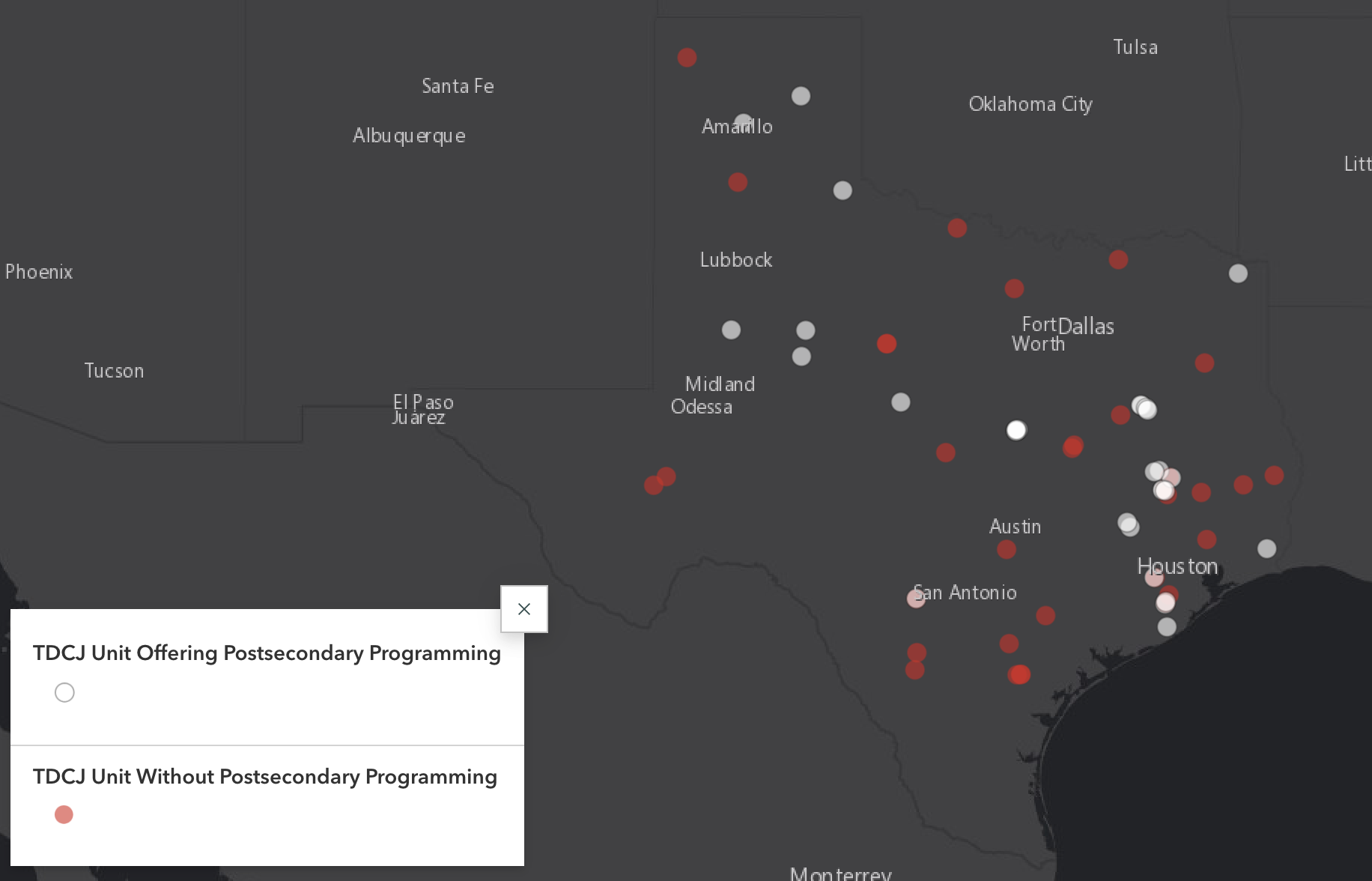
Building a Better Texas: How HB 8 (88R) Can Expand Higher Education in Prisons
Since July 2023, prisons in Texas and across the nation have entered a new era. Students are now eligible to receive Pell Grants to finance their education while incarcerated. The U.S. Department of Education (ED) believes this avenue to funding one’s education could allow an estimated 760,000 new students to become eligible for financial aid. In Texas, over 60,000 individuals currently confined in Texas Department of Criminal Justice (TDCJ) facilities could now be eligible to enroll in a Prison Education Program (PEP) during their stay of incarceration. This change bestows the opportunity for students to expand their intellect, obtain hands-on career training, and engage in prosocial behaviors — all of which are critical components to one’s reentry into society.
As such, it is necessary to bolster the pool of education providers that can administer PEPs. Currently, postsecondary education is offered through partnerships between TDCJ and local colleges or universities, with the availability of these programs varying by geographical location. Of the 64 prison units across TDCJ, only 31 offer postsecondary programming while 33 do not. With location playing a significant role in education access, prisons located near major urban areas generally have more opportunities to offer bachelor's degree programs compared to units in remote regions of Texas. However, many of the units without programming are situated near schools offering at least associate-level education. This means tangible opportunities exist to close the educational gap, but a variety of obstacles continue to limit access for incarcerated students.

Rural units consistently struggle to provide programming due to (1) limited partnership opportunities with nearby educational institutions, (2) weak technological infrastructure, and (3) the lengthy distances between prison units and education campuses. For instance, the T.L. Roach Unit in Northwest Texas is located over 100 miles away from the nearest university. Even if partnerships are created, rural schools may lack the resources to sustain prison programming long term, especially if significant travel time is required for faculty.
House Bill 8 (HB 8) was passed during the 88th Texas legislative session, paving a new path forward for community colleges as they aim to expand their program offerings and student bases. The bill revamped the funding mechanism for community colleges and aimed to align the state’s education funding system with the needs of the workforce and Texas students. The previous funding model primarily focused on the amount of time students spent in class, better known as contact hours. The new formula focuses on two primary tiers: 1) base funding for instructional and operational needs and 2) performance funding from the state based on measurable student outcomes like earning credentials of value and transfer rates.
Performance-based funding focuses on factors that reflect real-world impact and student success. Now, the question isn’t just whether students are attending classes, but rather are they earning credentials that matter. Are students achieving certifications or degrees that are valuable? Are they gaining training in high-demand fields that will lead to successful careers? This shift in priorities serves as a financial incentive to offer programs and degrees that better prepare students for the workforce. Texas is focused on ensuring its educational investments result in prepared graduates and stronger economic outcomes. As TDCJ’s 2030 plan purports a goal of a 95% employment rate for people released from its custody, there’s no reason this mentality can’t be applied to our state’s incarcerated students and the educational programs offered in TDCJ’s units.
The new funding model also grants additional base-level funding to community colleges who educate economically disadvantaged students and those 25 years or older. Given that Pell dollars are now accessible to incarcerated students, the implementation of PEPs could generate more funding for community colleges who are contracting with TDCJ to serve this economically disadvantaged population. Remember, nearly half of TDCJ’s population qualifies for Pell Grant aid. Now, community colleges who contract with TDCJ to offer PEPs can receive this additional base tier funding allocation from the state. And, with the average age of someone confined in TDCJ being 41 years old, community colleges could receive additional funding for serving older students.
Since 1980, state investment in community college budgets has declined, leaving community colleges to rely on student tuition fees to fund their annual budgets. The recently announced college tuition freeze by Texas Governor Greg Abbott has sparked concerns that colleges could become strapped for cash if they cannot adjust tuition prices. That said, HB 8 and the reinstatement of Pell Grants for incarcerated students can bring a new stream of revenue to schools across the state. By implementing Prison Education Programs and increasing school populations, community colleges could recoup projected revenue losses from the tuition freeze. This could allow for the retention of faculty and staff while providing education to a new group of students.
Research has consistently emphasized the challenges people face after incarceration. Providing students with opportunities to obtain credentials of value can reduce recidivism rates and ameliorate the reentry challenges people face post-release. Ushered by Pell Reinstatement and HB 8, community colleges across Texas have an opportunity to expand their reach through Pell-funded PEPs. This creates a win-win situation, benefiting both the colleges by increasing their funding and the incarcerated individuals who gain access to education.
Education is a fundamental human right. We must ensure that all individuals, including those incarcerated, can reach their full potential. Expanding access to prison education programs allows us to build a better Texas; one that builds pathways to success no matter where you are.